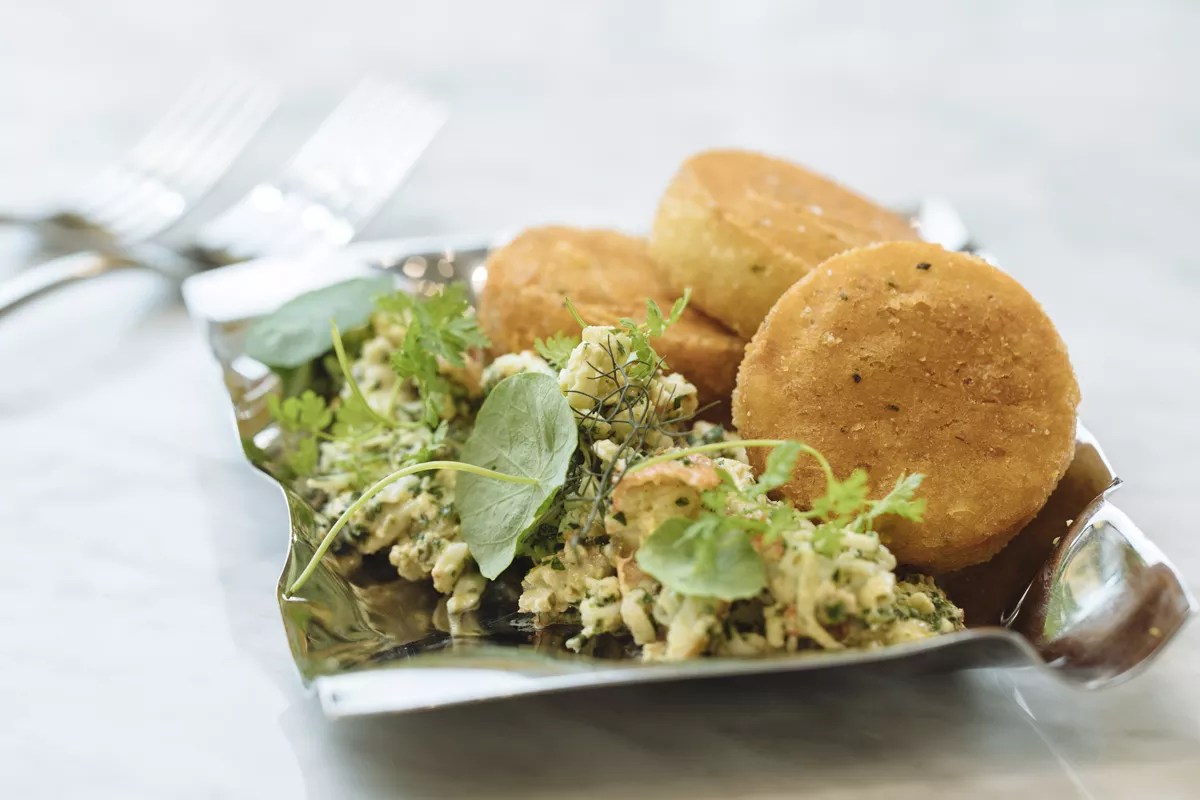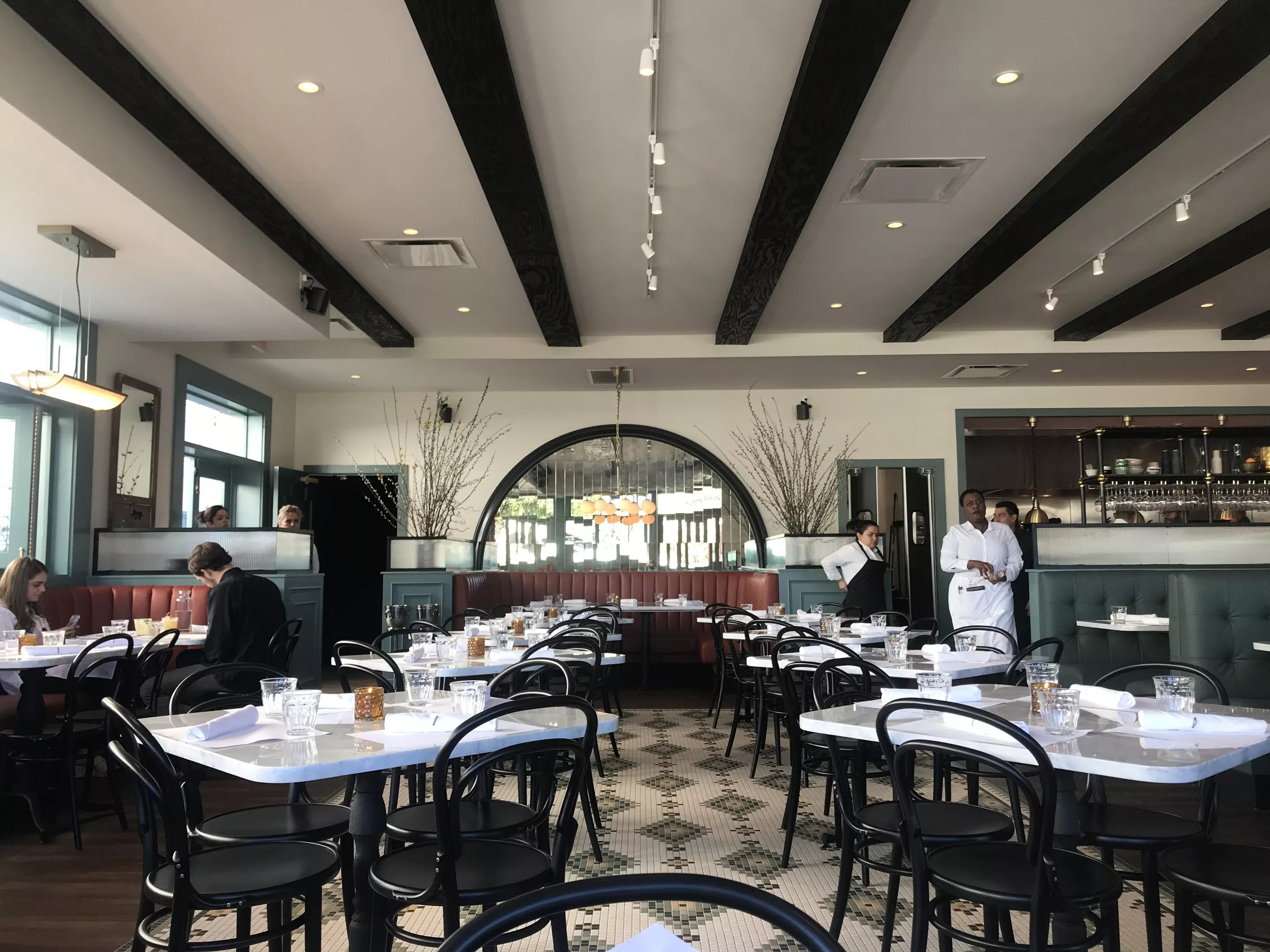
Kathy Tran

Audio By Carbonatix
According to one indicator, the restaurant bubble in Dallas is going to burst soon.
The warning sign is the rise of what I call “servant restaurants.” Servant restaurants exist primarily to cater to the whims and caprices of extremely rich customers. Chefs in charge of such kitchens aren’t really given creative freedom; their job is to make sure that wealthy patrons stay happy. In other words, they’re servants.
Being a servant isn’t inherently bad, and we’re not here to shame anyone. Many of these places serve very good, skillfully made food. But an excess of servant restaurants is bad for a city for a number of reasons.
First, they bring income inequality to the dining room, creating a whole tier of eateries where normal people can never afford to go. I’m not talking about special-occasion restaurants; I’m talking about kitchens that plate ordinary sandwiches, chops and salads at prices that scare away the 99 percent.
Second, servant restaurants vacuum up creative minds and hide them away from the general public to serve a tiny cadre of elites. Third, they discourage innovation in food by establishing a high-dollar market for the comfort foods of a mostly white, elderly clientele. Fourth, they encourage a general decadence in the food scene. (Case in point: edible gold.)
Servant restaurants, with their high price tags and basic lack of seriousness, portend a bust, because they are caused by an unhealthy economy funneling money away from ordinary consumers. Ultimately, too many businesses serve too few diners.
The next time the market takes a hit, servant restaurants’ luxurious food costs, soaring overheads and fickle, undiversified clientele can help bring down a whole city’s hospitality industry.

The interior at Beverley’s on North Fitzhugh Avenue
Beth Rankin
This business model isn’t unique to Dallas. Ryan Sutton has tracked similar kitchens with vigilance for Eater in New York City, and as Texas Monthly‘s Dan Solomon recently pointed out, a new Houston restaurant’s $400 order of fajitas perfectly fits the model.
That restaurant, Solomon wrote, “isn’t selling you food. They’re selling you the experience of feeling rich as hell.”
Sadly, servant restaurants and the inequality they represent are a big part of the Dallas picture.
A host of creative, diverse, young chefs are working the pop-up scene, serving bites of their food at breweries, private parties, Asian night markets, one-night tastings and guest dinners at established restaurants. Meanwhile, another group of chefs congregate around the Park Cities to serve steaks, caviar and wagyu fajitas.
Don’t get me wrong. I love exclusive foods. I love it when the Observer will pay for them. If anyone out there wants to send me a bottle of Cristal, slide into my DMs.
But the trend in Dallas is clear to see. Local restaurateur Stephan Courseau and his business partner, television chef Curtis Stone, center the menu at their new restaurant, Georgie, around a 42-ounce bone-in rib-eye of wagyu meat flown in from Australia. The price: $390.
Sandwich shop entrepreneur Hunter Pond will move into the same sector with an upcoming steakhouse, Drake’s, which describes itself as “an ode to old Hollywood.” Retro Tex-Mex joint Las Palmas recently debuted a $36 order of wagyu fajitas for two. Beverley’s is frequently full of customers so addicted to caviar latkes that they don’t mind the eardrum-cracking noise.

Four little servings with a lot of chive make up this plate of deviled eggs from Mirador.
Taylor Adams
Avner Samuel’s bistro Nosh, which recently hosted Texas Gov. Greg Abbott for a dinner, is a half-and-half combination of pretty darn good Israeli food with silly nonsense like a blinking LED light plate and a volcano-shaped platter of ham served over a candle.
Courseau, of Georgie, is an old pro at this genre thanks to Le Bilboquet and Up on Knox. Nick Badovinus built an empire by dressing up ingratiation as edginess. Mirador is the high-dollar cafeteria to a hoity-toity department store that sells $90 socks. Grange Hall will soon find a new location for its $29 open-faced egg salad sandwich. Why $29? Two reasons: caviar, and the fact that hunger is only a secondary reason to order the sandwich.
The presence of good food is optional at these restaurants, less important than the presence of one’s social peers, the deployment of one’s money and the acquisition of status symbols.
Food is the ultimate status symbol because it is so fleeting. One cannot objectively say that a $390 steak tastes three times as good as a $130 steak; flavor doesn’t scale that way. That $390 can buy a once-in-a-lifetime meal at a restaurant with an extraordinary tasting menu and rare drinks, like Le Bernardin in New York – or it can reassure wealthy Dallasites that they have the power to spend that much money on a meal they may not remember next week.
We rarely review servant restaurants, in part because Observer readers aren’t all obscenely wealthy, but mostly because those restaurants are not about food. Reviewing them properly would require either comparing the “scene” to other wealthy playgrounds or publishing lengthy rants about income inequality.
Nevertheless, the boomlet continues. File away those $36 fajitas and $390 steaks in your memory cells, because the next time our economy dips, this heady environment of frivolous excess will be a dream. We’ll wake up and wonder where the $29 egg sandwiches went.
Ironically, or perhaps tragically, middle-class dining in Dallas is at its all-time best during this servant restaurant boom. Thirty years ago, a middle-class dinner here was Chili’s. Even since 2012, affordable but delicious options have reached more neighborhoods and become more diverse. Neighborhood restaurants are on the rise.
Dallas is full of creative tacos, ramen, banh mi, pastas, barbecue, sushi rolls, arepas and deviled eggs. That’s an even better reason for diners – and food writers – to skip the servant restaurants catering to our clubby elites. They can keep their $22 po’boys. We just need to hope that when their house of cards comes tumbling down, it doesn’t take the rest of us with it.